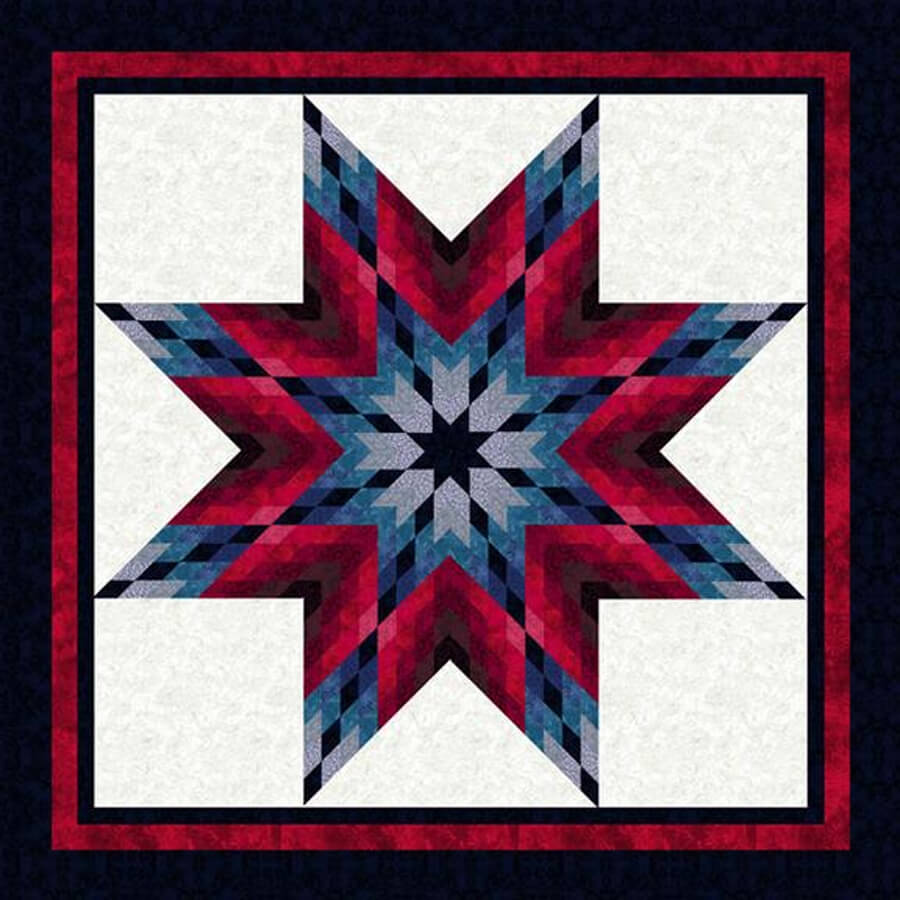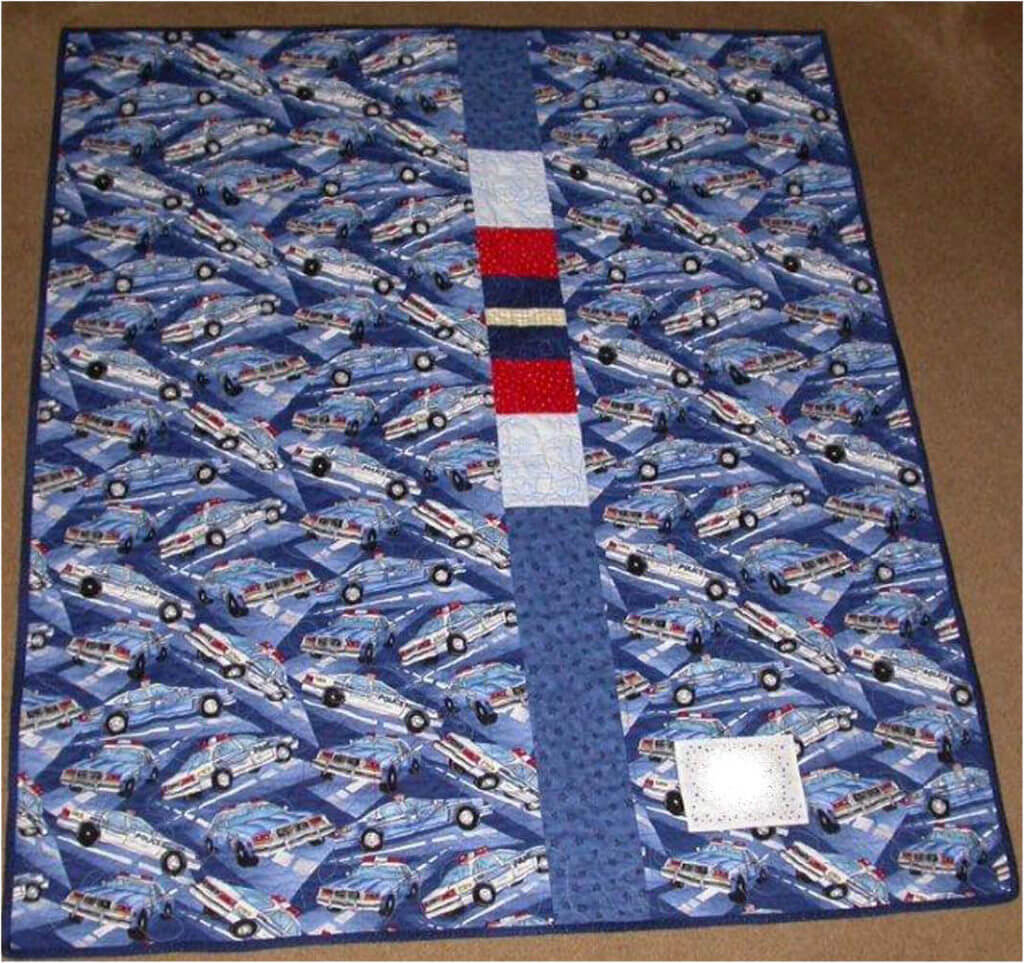
Foundation-piecing — often called “paper piecing” — was one of the great revolutions in quiltmaking. The technique makes it easy to get very accurate seams and wonderfully sharp points. However, it can’t be used for all blocks, and projects using foundation piecing are not portable.
Fortunately, it’s not difficult to convert a foundation paper to be sewn using traditional techniques. Let’s see how with the Day Lily block from the Jinny’s Garden block-of-the-month quilt.
Reverse the Image. Because fabrics for foundation-pieced blocks are sewn on the reverse of the paper, you need to work on a mirror-image of the foundation. There are two easy ways to do this: copy the foundation using a “mirror-image” or “reverse image” setting on a copier or printer; or work from the back of the foundation. (You might need to trace over the lines with a dark or heavy marker to see them easily.)
Make Templates. To make a template, lay a sheet of semi-transparent template plastic over the foundation. Using a permanent marker, trace the first shape onto the plastic. Those lines are the sewing lines, so you must also trace lines 1/4″ outside. (Jinny’s Perfect Piecer is ideal for this task.) Also be sure to add the piecing number to the template.

This is the original block foundation.

Trace the shape from the reversed foundation onto template plastic.

Mark lines 1/4-inch outside the original lines.

Be sure to number the template and add a grainline arrow.
Add Grainline Arrow. The stretch in a fabric isn’t nearly the concern when foundation piecing as it is when sewing traditionally. So, it’s important to add a grainline arrow to the template to help give your patch stability and prevent stretching. (For more information on grainline, see Jinny’s tip on The Importance of Fabric Grain.)
For Fewer Templates. To reduce the number of unique templates and patches you need to make, look for symmetrical patches. Many blocks — foundation and traditional — have patches that are repeated in the block as reverse or mirror-image patches. To cut out a mirror-image patch, you simply flip the template upside down. You find mirror-image patches on the opposite side of the center line in a block.
We’ve marked the center line on the Day Lily block. The patches marked 12 and 13 are mirror-image. Patches 8 and 9 look like they are mirror-images, but after making the template for 8, we discovered that 9 is a little different. It would need its own template.
You can also alter the patches a little to gain a little more symmetry. Foundation piecing requires that your next patch always covers the raw edges of the previous patches. So in Day Lily, Patch 11 is designed to cover Patches 8, 9 and 10. In traditional quilt making, that’s not necessary, so you could re-draw Patch 10 to extend to the center line. Patch 11 is then the mirror-image of Patch 10 — one less template to make!

Patch 10 is re-drawn to end at the diagonal center line of the block.

Patch 11 is now the exact mirror-image of Patch 10 and can use the same template.
Mark Seam Intersections. Foundation blocks often have patches with very sharp or unusual angles. It can be difficult to determine how to fit these patches together, so mark the seam intersections on your templates then transfer them to the wrong side of your fabric patches.





















































